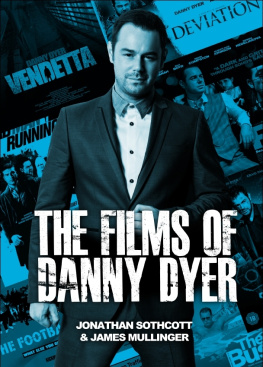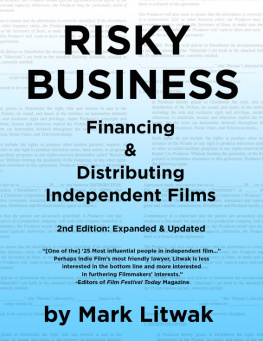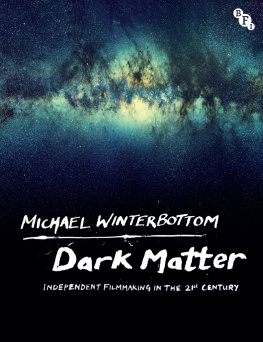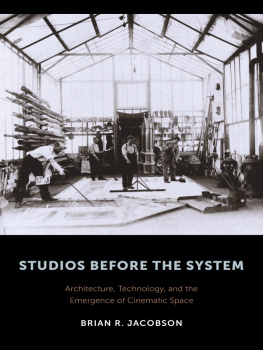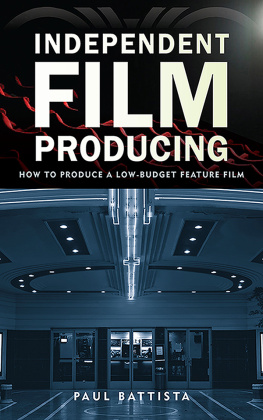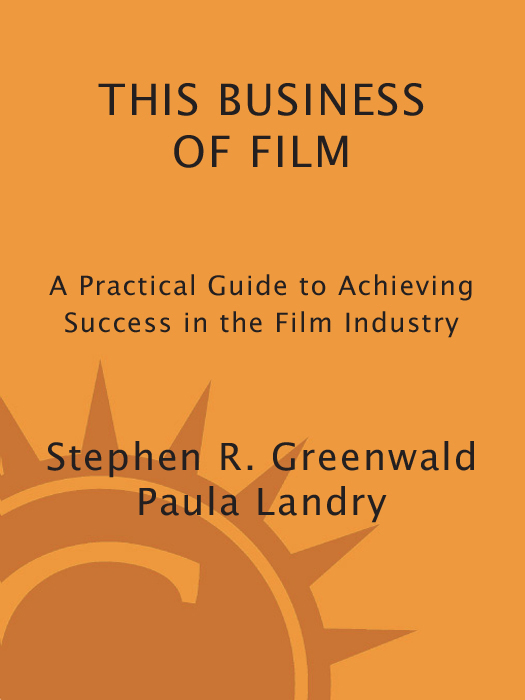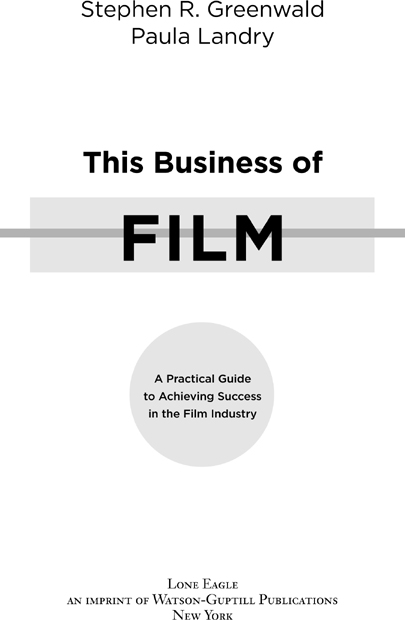PREFACE
F or some years the authors have taught a course on the film industry at Metropolitan College of New York as part of the Colleges Masters of Business Administration in Media Management Program. The content and structure of this book is based on that course.
In looking for texts and materials to assign and recommend to the students, we found that while there were some excellent books and other material on specific aspects of the movie business, such as production, distribution, and legal and business affairs, it was hard to find a single book that provided an overview of all aspects of the industry in an integrated way and from primarily a business, rather than creative, artistic, or legal perspective. So we took up the challenge of writing such a book.
The organization and structure of the book follows that of the course we teach, examining the different parts of the industry in an order that mirrors the steps involved in making and exploiting a film. After a survey of the history of the industry and an overview of its current structure, we follow those steps through development, financing, production, distribution, exhibition, marketing, and finally accounting for costs and revenues.
While our goal is to provide the broadest possible macro overview of the movies as a business, and the book is in no way intended to be a how to, we have tried to include enough specifics and details in each subject area to hopefully give guidance to readers on how the industry works on a pragmatic, nuts and bolts level, especially for readers with an interest in pursuing a career in the business.
There are several large themes we try to stress throughout the book; themes related to characteristics about the film industry that make it different in some ways than other businesses and that offer insight into the past and future. First, that film is both an art form and a business and that success in the industry requires an ability to navigate and mediate between those two sometimes warring and opposing poles. Closely related is that an ability to manage creative talent is a sine qua non for reaching the top in the business. Second, that film, as an art and a business, is technologically driven and that technological developments have shaped and will continue to shape, the way films are made and distributed and, not so obviously perhaps, the very nature and kinds of films that are made. Third, that there are recurring phenomena in the history of the business that, if observed, point to an understanding of the future. An example is the reluctance of the industry, and particularly its major players, to embrace technological change but rather to at first fear and fight it, then to let other entrepreneurs take the risk and rewards, if any, of proving the value of the new technology, and then, after it has been proven, taking it over and co-opting those who took the risks, turning the technology to the service of the industry. In that drama lie clues to both risks and rewards for the future. Fourth, and related, is that in the film industry, as in other activities and enterprises, a knowledge of the past is the key to the future, and an understanding of how the industry has responded and adapted to change, economic, political, and cultural as well as technological, will help form an understanding of how the industry will adapt to the change that is inevitably coming. Those who have studied the past will be in a better position to take advantage of future change.
The final theme is that the film business, like other media businesses, is now at the threshold of radical change, at least as significant if not more so than many of the changes of the past, and that this transformative change, driven by the extraordinary advances in new forms of production and particularly distribution, enabled by the digital revolution, will alter the basic architecture of the industry that has prevailed almost since its beginnings, in dramatic and possibly unforeseen ways. This radical change offers challenges and rewards to those who embrace it.
Both authors have had the privilege of working in the film industry and in the course of that work meeting and dealing with the many extraordinarily talented and dedicated people in the movie business. It is an exciting and vibrant industry, and an important one as well, serving as a repository of much of our cultural and social history and as a powerful force for the transmission of ideas and social commentary, both good and bad. While demanding, the movie business is also an enjoyable place to work, full of interesting and passionate people. And in the end, it is all about telling stories people want to see and hear. We hope we have told a story that you will enjoy as well.
Wed like to thank Rebecca Sullivan and Jamie Bauer for their patience, good humor, and unwavering support; Nicole Bukowski and JFA Production Accounting for sharing their professional expertise; Harv Zimmel, the master of the pitch; and Ross Plotkin for his advice and guidance.
CHAPTER 1 A History of Film
T his is a book about the business of film. In the popular imagination, the film business is a handful of big, well-known studios located in Los Angeles, the films these studios release, and the movie stars that appear in them. While it is true the studios are responsible for producing and distributing the movies that receive the most public attention and attract the most dollars, the film business is more than just these few companies and their output. The film business also includes: independent filmmakers working outside the studio system and producing some of each years most interesting and thought-provoking films; documentarians focusing on social and political issues; animators; producers and distributors of films made for television, video, and DVD (digital video disc); producers of educational films; independent distributors; foreign sales agents; theatrical exhibitors; talent agents and managers; as well as the thousands of vendors providing services required to create, market, and distribute these films.
Film is a global business. American films dominate the world market, contributing to the position of entertainment and media as the nations leading export industry. With almost half the U.S. film industrys revenue coming from abroad, success in the movie business requires a keen understanding of market and cultural factors and economic developments throughout the world.
Film is both a business and an art form, and balancing the interests and demands of the two has been, and remains, a consistent challenge within the industry. In the United States, business interests have almost always dominated. In much of the rest of the world, particularly Europe, art and the interests of artists have often trumped business interests, although this is changing. Many believe that, in part, the supremacy of the profit motive is what explains the dominance of American films around the world. From its beginnings, the American film industry was financed by the private sector as a commercial profit-making enterprise. Success was measured by the imperatives of the private capital markets: a return on capital and wealth creation. Unlike in Europe, where there was a history of public support for the creative arts that was extended to filmmaking, there was little or no public financial support for filmmaking in the United States.
The businessmen and investors who financed and often ran the film industry were interested in making money, which meant making films that the public wanted to see. American filmmakers became adept at turning out movies that satisfied the tastes of the broadest segments of the public, and drew the largest possible audiences. What counted was success at the box office, not critical acclaim or approval from the tastemakers who defined artistic worth. The producers, writers, and directors who could make commercially successful movies were rewarded financially and with more film projects, reinforcing the dominance of movie genres and styles that had broad-based popular appeal. In this system the producer, who was often the investor or who represented the interest of the investors, had control over the filmmaking process. He or she had the power to hire and fire the creative talent, and to make whatever changes necessary during the production or editing process in order to make a film more commercial. These commercially savvy producersmen like Daryl Zanuck, David O. Selznick, Irving Thalberg, and Robert Evansoften ended up as heads of film studios.


